Welcome to our free classical music site

Do you write about classical music? Are you a blogger? Want to team up with Classical Connect? Send us a message, let's talk!

Do you write about classical music? Are you a blogger? Want to team up with Classical Connect? Send us a message, let's talk!
September 16, 2013. Catching up: recent anniversaries. We’ve missed several significant musical anniversaries during the past two weeks and we’re rectifying the omissions, however briefly, this week. Antonin Dvořák was born on September 8, 1841 in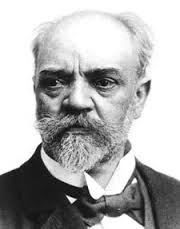 Nelahozeves, a village near Prague, then part of the Austrian Empire. Dvořák studied at the organ school in Prague and later, starting in 1862, played the viola in the Bohemian Provisional Theater Orchestra (in 1866 Bedřich Smetana became the orchestra’s chief conductor). Around that time Dvořák started seriously composing – his first two quartets were written in 1861 and ’62. In 1874, Dvořák submitted 15 works, including two symphonies, to the jury of the Austrian State Stipendium. Johannes Brahms and Eduard Hanslick were on the board (we mentioned Hanslick’s name recently when we wrote about Anton Bruckner – he was Brahms’s friend and a major Bruckner detractor). The influential Brahms was very impressed with the talent of the young Czech composer and Dvořák received the stipend. After that, Brahms became a supporter, and introduced Dvořák to Fritz Simrock, the owner of one of the largest publishing houses in Europe. In 1877 Simrock commissioned a piece, Symphonic Variations, which eventually became one of Dvořák’s most popular compositions (the 1877 Prague premier was not very well received, but Hanslick wrote to Dvořák that Brahms was very enthusiastic. Ten years later Hans Fisher conducted it in Vienna to a great success). You can hear it in the performance by the London Symphony Orchestra, the late Sir Colin Davis conducting.
Nelahozeves, a village near Prague, then part of the Austrian Empire. Dvořák studied at the organ school in Prague and later, starting in 1862, played the viola in the Bohemian Provisional Theater Orchestra (in 1866 Bedřich Smetana became the orchestra’s chief conductor). Around that time Dvořák started seriously composing – his first two quartets were written in 1861 and ’62. In 1874, Dvořák submitted 15 works, including two symphonies, to the jury of the Austrian State Stipendium. Johannes Brahms and Eduard Hanslick were on the board (we mentioned Hanslick’s name recently when we wrote about Anton Bruckner – he was Brahms’s friend and a major Bruckner detractor). The influential Brahms was very impressed with the talent of the young Czech composer and Dvořák received the stipend. After that, Brahms became a supporter, and introduced Dvořák to Fritz Simrock, the owner of one of the largest publishing houses in Europe. In 1877 Simrock commissioned a piece, Symphonic Variations, which eventually became one of Dvořák’s most popular compositions (the 1877 Prague premier was not very well received, but Hanslick wrote to Dvořák that Brahms was very enthusiastic. Ten years later Hans Fisher conducted it in Vienna to a great success). You can hear it in the performance by the London Symphony Orchestra, the late Sir Colin Davis conducting.
In 1880s Dvořák became known internationally, with Hans Richter conducting his work in London and Vienna. In 1892 Dvořák was invited to New York to head The National Conservatory of Music of America. He stayed there three years, during which he wrote such things as Symphony No.9, "From the New World", and the American quartet in F Major. He also wrote a piano cycle of eight short pieces called Humoresques. The seventh piece, in G flat Major, became extremely popular. Here it is, from one of our recent uploads, in the performance by the Czech pianist Martin Kasik.
Darius Milhaud was born on September 4, 1892 in Marseille. He went to study at the Paris Conservatory, where he met Arthur Honegger and Germaine Tailleferre. From 1917 to 1919 Milhaud lived in Brazil, serving as the secretary to Paul Claudel, the famous poet and playwright, who at the time was the French ambassador to Brazil. While there, Milhaud became influenced by Brazilian folk music. One of the tunes he liked, an old tango, was called The Ox on the Roof. Milhaud used it (and many other folk tunes) in his ballet, which he named after the tango, Le boeuf sur le toit, (The Ox on the Roof in French). It was premiered in February of 1920 to great success. By then Milhaud, Honegger and Tailleferre linked with Francis Poulenc, Georges Auric and Louis Durey, and became known as Les Six (The Six). Jean Cocteau, the poet, playwrite and filmmaker, joined the group, and all of them started frquenting a bar called La gaya. The music to Le boeuf sur le toit became very popular, and Milhaud, with Georges Auric, and Arthur Rubinstein often played a six-handed version of it on the piano in the bar. In 1920 the bar moved to a larger space and the owner gave it the name Le boeuf sur le toit. It became one of the most famous gathering places in all of Paris: its patrons included the veritable who-is-who of the French cultural avant-garde (it still exist, but as a posh restaurant and with no Bohemians in attendance). Here’s the complete Le boeuf sur le toit in the performance by Orchestre de l’Opera de Lyon, Kent Nagano conducting.
PermalinkSeptember 9, 2013. Embarrassment of the riches: Purcell, Schoenberg, Frescobaldi, Dvořák, Milhaud, Cherubini, Pärt. Last week we wrote about Anton Bruckner, but several other wonderful composers were born the same week: Antonin Dvořák and Darius Milhaud, and also Anton Diabelli, Johann Christian Bach, and Amy Beach. And this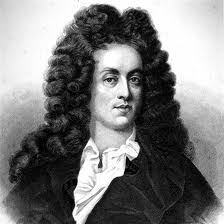 week continues with several more first-rate talents: from Girolamo Frescobaldi, who worked in the beginning of the 17th century to Henry Purcell at the end of it; to another Englishman, William Boyce, probably the most important English composer of the 18th century; to Clara Schumann, Robert’s wife and Brahms’s friend, a great pianist and important figure on the German music scene; to the revolutionary Arnold Schoenberg in the first half of the 20th century and finally to the Estonian composer Arvo Pärt at the end of it. We’ve written about most of these composers in the past and will commemorate them later in the year, but today we’ll mark Henry Purcell’s birthday, which is commonly presumed to fall on September 10, 1659. Purcell was born in Westminster, London. His father, Henry Purcell Sr., was a Gentleman of the Chapel Royal, where singers and musicians were trained to entertain the royal family. Several other members of the Purcell family were musicians, including Henry’s uncle and his younger brother, who also became a composer. Purcell’s father died when Henry was five, and his uncle became his guardian. He helped Henry to enter Chapel Royal as a chorister. When his voice broke, he found employment as an assistant to the Keeper of King’s instruments. Later, he tuned the organ of the Westminster Abbey. Purcell started composing at the age of nine. When he was 18, he succeeded Matthew Locke, a composer and music theorist, as the Composer of Charles II’s string orchestra. Two years later he was appointed the organist of the Westminster Abbey, after the composer and Purcell’s teacher John Blow resigned in favor of his pupil. Purcell’s life was short but it coincided with the turbulent period in England’s history at the end of the 17th century: as a youth he started serving King Charles II, then, after Charles’s death in 1685, he continued with King James II. He lived (and kept his positions) through the Glorious Revolution, and then worked for William III and his wife, Queen Mary II. Purcell died in 1695 at the age of 36 at the height of his career.
week continues with several more first-rate talents: from Girolamo Frescobaldi, who worked in the beginning of the 17th century to Henry Purcell at the end of it; to another Englishman, William Boyce, probably the most important English composer of the 18th century; to Clara Schumann, Robert’s wife and Brahms’s friend, a great pianist and important figure on the German music scene; to the revolutionary Arnold Schoenberg in the first half of the 20th century and finally to the Estonian composer Arvo Pärt at the end of it. We’ve written about most of these composers in the past and will commemorate them later in the year, but today we’ll mark Henry Purcell’s birthday, which is commonly presumed to fall on September 10, 1659. Purcell was born in Westminster, London. His father, Henry Purcell Sr., was a Gentleman of the Chapel Royal, where singers and musicians were trained to entertain the royal family. Several other members of the Purcell family were musicians, including Henry’s uncle and his younger brother, who also became a composer. Purcell’s father died when Henry was five, and his uncle became his guardian. He helped Henry to enter Chapel Royal as a chorister. When his voice broke, he found employment as an assistant to the Keeper of King’s instruments. Later, he tuned the organ of the Westminster Abbey. Purcell started composing at the age of nine. When he was 18, he succeeded Matthew Locke, a composer and music theorist, as the Composer of Charles II’s string orchestra. Two years later he was appointed the organist of the Westminster Abbey, after the composer and Purcell’s teacher John Blow resigned in favor of his pupil. Purcell’s life was short but it coincided with the turbulent period in England’s history at the end of the 17th century: as a youth he started serving King Charles II, then, after Charles’s death in 1685, he continued with King James II. He lived (and kept his positions) through the Glorious Revolution, and then worked for William III and his wife, Queen Mary II. Purcell died in 1695 at the age of 36 at the height of his career.
Purcell was a prolific composer: he wrote sacred music, songs, theater music, operas and the so-called semi-operas, in which music was mixed with dance and spoken word (English opera had to wait for Handel for its full development). Among his most famous compositions are the opera Dido and Aeneas (1688), and semi-operas The Fairy-Queen (1692) and The Indian Queen (1695). Here’s the famous aria When I Am Laid In Earth from Dido and Aeneas. It’s sung by the incomparable Jessye Norman. Purcell also wrote a number of instrumental compositions, many of them in the form of sonatas for two violin, bass viol (viola da gamba) and organ or harpsichord. On December 28th of 1694 Queen Mary died. The winter was very cold, and her embalmed body lay in state in Whitehall till March 5, when she was buried at Westminster Abbey. Purcell wrote Music for the Funeral of Queen Mary, one of his most popular pieces. Stanley Kubrick used part of it to great effect in his movie Clockwork Orange (the theme starts at the 11th minute of the recording). Eight months later Purcell was dead. The same Music was played on his funeral. He was also buried in Westminster Abbey, next to the organ. You can listen to the complete Music for the Funeral in the performance by The Sixteen, Harry Christophers conducting. Permalink
September 2, 2013. Anton Bruckner. This week we celebrate one of the most important composers of the 19th century, Anton Bruckner, who was born on September 4, 1824. Last year we attempted to give a broad overview of his life; this year we’ll focus on one of his symphonies,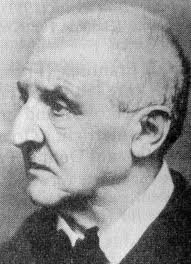 no. 5. Bruckner started working on the symphony in 1875 (he was 51 by then – he wrote his first symphony when he was already 41) and completed it the following year. Bruckner, who was born not far from Linz, had been living in Vienna and teaching music theory at the Vienna Conservatory. In 1875 he accepted a similar position at the Vienna University. In the preceding 10 years he already wrote five symphonies, most of them poorly received (Bruckner was so disheartened by the reception of the Symphony in D minor, which he wrote in 1869, that he refused to give it a number. It is now known as Symphony no. 0). Back in the 1860s and ‘70s the musical establishment in Vienna was divided between the devotees of Wagner and followers of Brahms. Bruckner worshiped Wagner’s music, and for that reason he became an enemy of a very influential critic and Brahms’s supporter Eduard Hanslick. Bruckner did have his own followers, one of them the young but very talented conductor Arthur Nikisch, who later premiered Bruckner’s Symphony no. 7. That support came not without considerable drawbacks: some conductors, such as Bruckner’s former pupil Franz Schalk, in an attempt to make his music more accessible to the Viennese public, performed it with numerous cuts and alterations to the scores. Sometime these changes were made without the composer’s knowledge, other times with the assent of the ever-insecure Bruckner.
no. 5. Bruckner started working on the symphony in 1875 (he was 51 by then – he wrote his first symphony when he was already 41) and completed it the following year. Bruckner, who was born not far from Linz, had been living in Vienna and teaching music theory at the Vienna Conservatory. In 1875 he accepted a similar position at the Vienna University. In the preceding 10 years he already wrote five symphonies, most of them poorly received (Bruckner was so disheartened by the reception of the Symphony in D minor, which he wrote in 1869, that he refused to give it a number. It is now known as Symphony no. 0). Back in the 1860s and ‘70s the musical establishment in Vienna was divided between the devotees of Wagner and followers of Brahms. Bruckner worshiped Wagner’s music, and for that reason he became an enemy of a very influential critic and Brahms’s supporter Eduard Hanslick. Bruckner did have his own followers, one of them the young but very talented conductor Arthur Nikisch, who later premiered Bruckner’s Symphony no. 7. That support came not without considerable drawbacks: some conductors, such as Bruckner’s former pupil Franz Schalk, in an attempt to make his music more accessible to the Viennese public, performed it with numerous cuts and alterations to the scores. Sometime these changes were made without the composer’s knowledge, other times with the assent of the ever-insecure Bruckner.
As all Bruckner’s symphonies, no. 5 consists of four movements. It starts with the pianissimo pizzicato of the slow Introduction, which evolves majestically into several major themes (Symphony no 5 is the only one by Bruckner that begins with a slow movement). Introduction is formally written in B-flat major, but tonality shifts almost continuously. Like the first movement, the second one also starts with a pizzicato (and so does the forth movement; for that reason one of the Symphony’s monikers is Pizzicato. The other common name is Tragic). The second movement, Adagio, is marked Sehr langsam or "very slow." The music moves from one thematic material to another, but the general tone of this movement is more lyrical than the mood of the first movement. The third movement, Scherzo Molto Vivace (very lively) is in D minor. The tempo of the last movement, Finale is marked as Adagio, the same as of the first movement, and indeed, it has a similarly leisurely opening. It reuses the theme first heard in the opening movement, but soon evolves into the new material. The amazing sonic structure that Bruckner builds in the Finale contains some of most interesting music he ever wrote.
The first performance of the symphony was conducted by Franz Schalk in 1894. Schalk made many cuts and changed some instrumentation, probably without Bruckner’s approval (Bruckner himself was ill and couldn’t attend the performance). We’ll hear the complete authentic 1878 version (it runs for one hour and 17 minutes) in the performance by Staatskapelle Dresden under the direction of Giuseppe Sinopoli. Sinopoli, who died of a heart attack in 2001at the age 54, was one a major Brucknerians of the late 20th century. You can also listen to the individual movements (just click on their titles).
PermalinkAugust 26, 2013. Arthur Rubinstein plays Chopin’s Polonaise in F-sharp minor. Shortly after Arthur Rubinstein’s death in December of 1982, WFMT, the classical music radio station in Chicago,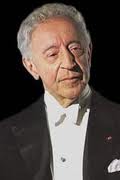 ran a series of programs in which they played recordings made by Rubinstein on different stages of his phenomenal career. This was one of the most fascinating programming features ever produced by WFMT. While Rubinstein’s repertoire was broad, many of the recordings were of Chopin; after all, Rubinstein was, without a doubt, the greatest interpreter of Chopin in the 20th century, and recorded many of his works multiple times, from the late 1920s till well into the 1970s. Recently, on the same WFMT, we caught a recording of Rubinstein playing Chopin’s Polonaise in F-sharp minor, op. 44. Rubinstein "owned" this Polonaise, even though it was part of the repertoire of practically every major pianist of the last century (Vladimir Horowitz was another famous interpreter). We thought that it would be interesting to present recordings of the piece made by Arthur Rubinstein through the years, as it would help us to understand both his mastery and the piece itself. Thanks to YouTube we found three of these: one from the 30s, another made in the 50s, and the last one – in the 1960s.
ran a series of programs in which they played recordings made by Rubinstein on different stages of his phenomenal career. This was one of the most fascinating programming features ever produced by WFMT. While Rubinstein’s repertoire was broad, many of the recordings were of Chopin; after all, Rubinstein was, without a doubt, the greatest interpreter of Chopin in the 20th century, and recorded many of his works multiple times, from the late 1920s till well into the 1970s. Recently, on the same WFMT, we caught a recording of Rubinstein playing Chopin’s Polonaise in F-sharp minor, op. 44. Rubinstein "owned" this Polonaise, even though it was part of the repertoire of practically every major pianist of the last century (Vladimir Horowitz was another famous interpreter). We thought that it would be interesting to present recordings of the piece made by Arthur Rubinstein through the years, as it would help us to understand both his mastery and the piece itself. Thanks to YouTube we found three of these: one from the 30s, another made in the 50s, and the last one – in the 1960s.
The first recording was made in 1935 (hence the relative low quality). Rubinstein was 48 at the time (he was born in the Polish city of Łódź, which back then belonged to the Russian Empire, on January 28, 1887). Just three years earlier, in 1932, Rubinstein, a complete natural who never practiced a lot, decided that he needed to work on his technique and withdrew from the concert scene for several month. He practiced many hours a day, something he had not done either before or after that time.. In this recording he still misses notes but somehow it doesn’t matter (what an innocent time it was: today sound engineers would’ve spliced and diced several takes and made it technically perfect). At 9 minutes and 25 seconds this is the fastest of the three, and for all its brilliance, nuance, and lyricism of the middle part, probably the least impressive of them.
The second recording was made in 1951. Rubinstein, at 64, was in his prime. This recording is much darker than the one he made 16 years earlier and also slower (it runs 10 minutes and 37 seconds). This Polonaise is known as “Tragic” and that’s how Rubinstein plays it; the repeating figure at the end of the first section sounds practically brutal. The central section, a mazurka, also sounds more wistful than in the earlier recording. One of the miraculous qualities of Rubinstein’s playing was the rhythm, very free but absolutely natural, breathing with the development of the piece. The way he moves the final section forward, stately, almost imperiously, is truly a wonder. The quality of this recording is, unfortunately, rather poor. We think that it still is very much worth listening to: piano playing rarely get any better than this.
The third recording was made in 1964 and the quality of the recording is the best of the three. Rubinstein was 77 but still extremely active. One can hear some very minor technical problems but as is so often with Rubinstein, they make no difference (one may recall Hans von Bulow’s complaints that the public ignores Liszt’s “fistfuls of wrong notes” while noticing every single one of his). This is the slowest recording (11 minutes and 15 seconds) but not because of the technical difficulties preventing Rubinstein from playing faster: he needed time to develop a “story.” This time the story is softer than in ’51, but still terrible, poignant and at times heartbreaking. This is probably the deepest interpretation, although many listeners may disagree and “vote” for the ’51 recording.
Rubinstein continued to perform and record for another 12 years, giving his last concert in London in May of 1976. He died on December 20, 1982, aged 95.
PermalinkAugust 19, 2013. Claude Debussy. The great French composer was born on August 22, 1862 in Saint-Germain-en-Laye, not far from Paris. We’ve written about Debussy a number of times in the past (for example here), so to commemorate his birthday this time, we’ll focus on his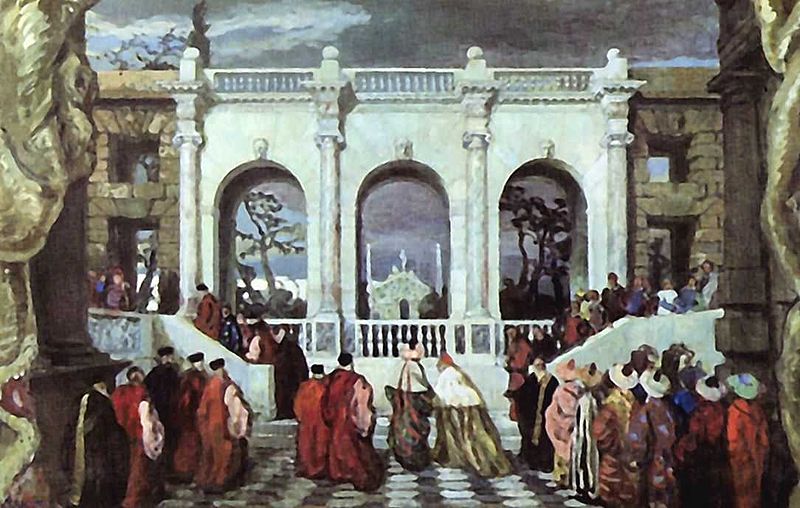 last symphonic composition, a “dance poem” Jeux (Games). Jeux was composed in 1912 for Sergei Diaghilev’s Ballets Russes. The timing of this post is auspicious because right now the National Gallery of Art’s is running an exciting exhibition, “Diaghilev and the Ballets Russes, 1909 – 1929.” It is aptly subtitled “When Art Danced with Music.”
last symphonic composition, a “dance poem” Jeux (Games). Jeux was composed in 1912 for Sergei Diaghilev’s Ballets Russes. The timing of this post is auspicious because right now the National Gallery of Art’s is running an exciting exhibition, “Diaghilev and the Ballets Russes, 1909 – 1929.” It is aptly subtitled “When Art Danced with Music.”
Jeux was not the first Ballets Russes production to use Debussy’s music: earlier in the year, Nihjinsky choreographed and performed in the ballet L'après-midi d'un faune, which was based on a symphonic poem by Debussy called Prélude à l'après-midi d'un faune (Prelude to the Afternoon of a Faun). L'après-midi, written in 1894, was based on a poem by Stéphane Mallarmé. Jeux, on the other hand, was written specifically as a ballet and was choreographed by Vaclav Nijinsky (he and the famous Karsavina danced in the original production). The first libretto called for an erotic encounter between three men. This turned out to be too scandalous even for the scandal-seeking Diagilev, so two of the men were turned into girls, without lessening the erotic charge. For the sets, Diagilev originally approached the painter Alexandre Benois; Benois’s idea was to create a 16th century Venetian holiday. This project fell through and production went to Leon Bakst, who previously created ingenious set designs for L'Après-midi d'un faune, Daphnis et Chloé and several other productions. In Bakst’s sets Jeux turned into a fantasy about the game of tennis and a love triangle. The ballet premiered at the Théâtre des Champs Elysées on May 29, 1913 with Pierre Monteux at the podium. The reception was lukewarm at best. And then, just two weeks later, Ballets Russes staged Stravinsky’s Le Sacre du printemps. The enormous scandal that engulfed that production completely eclipsed Jeux. Even though Jeux continued to be staged sporadically (Pierre Bonnard created some very interesting sets in 1920 for the L'Opera Garnier production), Debussy’s music was labeled unsuccessful and in the subsequent years was half-forgotten; its first commercial recording was made only in 1947. It took the likes of Pierre Boulez to gauge the real importance of the music. The harmonies of Jeux are indeed unusual, even for the contemporary ear. The melodies and tempos flow freely and change very frequently, sometimes as often as every two bars. The poem’s tonal base is also elusive. Pierre Boulez, in his analysis of Jeux, pointed to parallels with Anton Webern’s serialism.
We’ll hear Jeux performed live by the Royal Concertgebouw Orchestra, Christian Thielemann conducting. The picture above is from the unrealized staging of the ballet by Alexandre Benois.
PermalinkAugust 10, 2013. Greene, Sorabji, Ibert. We have an unusual collection of composers whose anniversaries are this week. Maurice Greene, an English Baroque composer, was born on August 12, 1696 in London. As a youngster he was a choirboy at St Paul Cathedral (the new cathedral, designed by Christopher Wren, was consecrated when Greene was one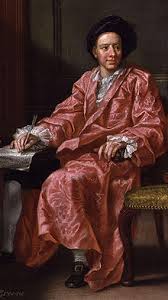 year old). He studied there under Jeremiah Clarke and eventually became the organist of the cathedral. In 1735 he was appointed to the very prestigious position of Master of the King’s Music. Unfortunately for Greene, his active period coincided with the musical reign of George Frideric Handel. Greene’s talent was of a much smaller caliber, but he could be considered the “second composer” of the period, not a small achievement in itself. Greene composed a number of "anthems," a form of Anglican church music. Many of these anthems are still in use today. Here’s is one of his most famous, Hearken Unto Me, Ye Holy Children, composed in 1728. It’s performed by The King's Consort, Robert King conducting.
year old). He studied there under Jeremiah Clarke and eventually became the organist of the cathedral. In 1735 he was appointed to the very prestigious position of Master of the King’s Music. Unfortunately for Greene, his active period coincided with the musical reign of George Frideric Handel. Greene’s talent was of a much smaller caliber, but he could be considered the “second composer” of the period, not a small achievement in itself. Greene composed a number of "anthems," a form of Anglican church music. Many of these anthems are still in use today. Here’s is one of his most famous, Hearken Unto Me, Ye Holy Children, composed in 1728. It’s performed by The King's Consort, Robert King conducting.
A very different English composer, Kaikhosru Shapurji Sorabji was born on August 14, 1892 as Leon Dudley Sorabji into a Parsi family in London (he later changed his name to emphasize his Parsi origins). The difference between the two is not just 300 years;a large part of the history of European music that separates them. Maurice Greene, with all his talents, was quite a conventional composer. There was nothing conventional about Sorabji. He wrote music that lasted for hours, sometimes so technically difficult that it was practically unplayable (his Opus clavicembalisticum (1930), which lasts about four hours, was at that time the longest piece ever written). Largely self-taught, he didn’t follow any discernable musical tradition. He was also a pianist, and much of his music is written for this instrument. Between 1940 and 1944 Sorabji wrote 100 Transcendental Etudes (each individual etude being mercifully short, about three to four minutes). Here’s Etude no. 32, performed by the Swedish pianist Fredrik Ullén. It may not be a remarkable piece but it does demonstrate Sorabji’s skill in sound coloration. Sorabji lived a long life: he died in 1988 at the age of 96.
The French composer Jacques Ibert was a contemporary of Sorabji, but that’s probably the only thing that they have in common. Whereas “ponderous” may be the word applied to much of Sorabji’s opus, "lighthearted" is how Ibert’s music is described best. Ibert was born in Paris on August 15, 1890. He started taking piano and violin lessons at the age of four. He went to study at the Paris Conservatory, but World War I put a temporary end to his studies. After the War, in which Ibert served as a naval officer, he returned to the studies and won the prestigious Prix de Rome (some years later Ibert became the director of Académie de France at the Villa Medici in Rome). Ibert didn’t belong to any particular music school. He wrote operas (most of them quite short), a ballet, a number of orchestral pieces, a lot of piano and chamber music and wonderful songs. He also wrote music for movies and theater. Here is Ibert’s Divertissement for chamber orchestra, written in 1929-1930. It’s performed by Orchestre Des Concert Lamoureux, Yutaka Sado conducting.Permalink